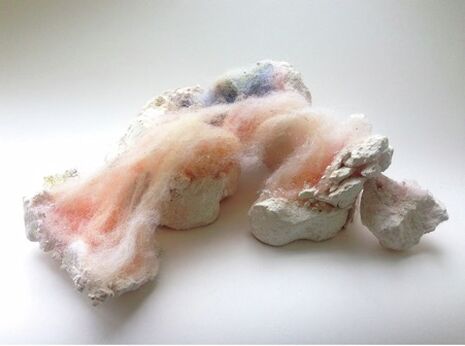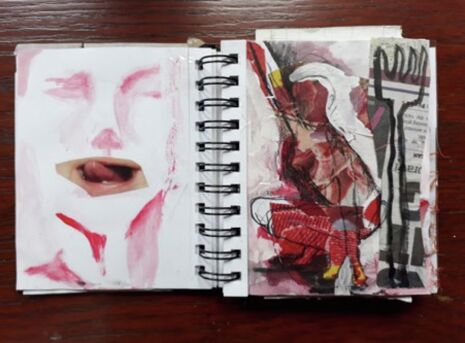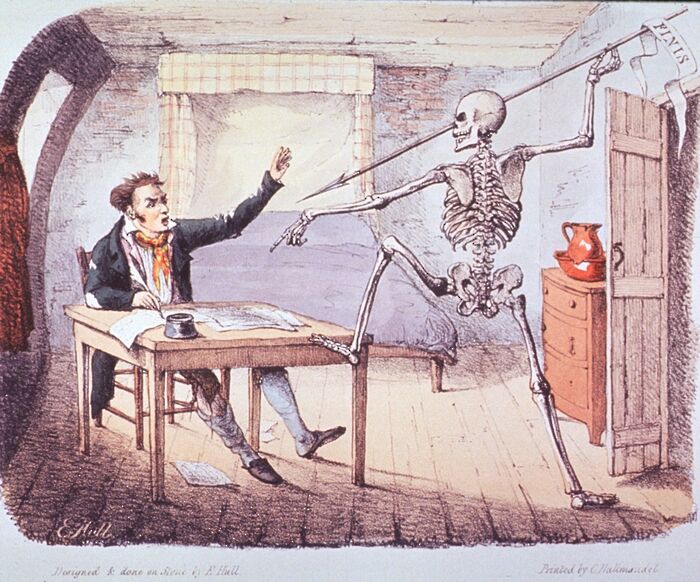Preview: Inkwell: A Night of Art and Poetry
Ellesheva Kissin speaks to the curators of FNTM Arts Festival’s final event, which hopes to close the week with a bang
BME movements at Cambridge are increasing in visibility, decolonisation of the curriculum is a hot topic, and Lola Olufemi has become a university treasure. To the average student it seems as though Cambridge is finally leaving its white cis male shackles behind and reaching for the dazzling heights of inclusivity and equality.
But this optimistic picture is projected by a disproportionately large discourse surrounding what is in fact only a very small increase in the opportunities and power given to those disadvantaged by the system.
“The pair’s fervour to project a political stance through the collection is clear”
The FNTM Arts Festival – standing for female, non-binary and trans-male people – seeks to change the student landscape. According to the creators of the festival, art and culture is still dominated by men. A shift in that dynamic, enabling self-identifying women and non-binary individuals to be the progenitors of culture, is a powerful and necessary move in the ‘de-erasing’ of women from history and from control of culture.
The Inkwell Exhibition at Downing’s Heong Gallery, the final event on the FNTM calendar, aims to do exactly that. The exhibition will provide a platform for all those disadvantaged by the gender divide to exhibit their art.

Speaking to Iman Khakoo and Kitya Mark, the curators of the exhibition, there’s strong excitement about the work that needs to be done in the art world. Kitya refers to the Guerilla Girls as one of the inspirations for the event, which speaks volumes about the curators’ politicisation of this collection of art; the exhibition has a story to tell and a narrative to engage with. While Iman and Kitya agree that the exhibition encourages voluntary as opposed to forced engagement, the pair’s fervour to project a political stance through the collection is clear. For Iman also, the exhibition provides an outlet for her frustrations at her degree’s syllabus and the discipline which is dominated by “white Western males”.
The name of the exhibition, ‘Inkwell’, stems from exactly this; the hope that visitors will choose to engage with the idea behind the event. As Iman puts it, a well is “a place of coming together” – and they hope that this metaphorical well, one of ink rather than of water, will bring people together in a similar communal, relaxed setting.

Fuelled by the idea of wells as communal gathering-places for the free exchange of ideas, the exhibition draws on the process of collaboration between artist and viewer, and artists’ private sketchbooks will be displayed alongside finished works. A sketchbook, containing only half-finished pieces, requires the viewer to imagine the sketches in finished form; this is true collaboration and a brilliant method for drawing viewers to engage. Exhibiting sketchbooks, according to Kitya, centres on the idea of intimacy, and it is this proximity to the artists’ uncompleted ideas that they hope will spark the conversation between the creators of the event and those who visit.
Iman mentions the work of student Anna Curzon-Price, who has submitted pieces that Iman praises, comparing her style to that of Kiki Smith. Curzon-Price’s submitted sketchbook is fascinating: she creates images of the human form using materials not usually associated with flesh and skin, yet somehow crafts and combines the unusual media to create the impression of human warmth. Iman is enthusiastic about this aspect of Curzon-Price’s art because it requires the viewer to reconsider their perceptions of the body in partnership with the artist. Sophie Mei is another artist to look out for, with her provocative submission, Discharged, a beautiful plaster-and-wool evocation of intimacy.
The gallery for the exhibition, like every other of the event’s details, has been chosen thoughtfully. Kitya and Iman want to reclaim the space, using its “white starkness” as a canvas on which to paint their own work of art: the art world as it ought to be. The effect of using such a traditional, well-established gallery for what is clearly an unusual exhibition, is intentionally created. Hopefully, says Kitya, viewers of the exhibition will sense the disparity between the gallery’s ‘legitimacy’ and the ‘illegitimate’ art form presented by the exhibition, and will question why it is that art does not always include representations of women.
Inkwell will take place at Downing’s Heong Gallery Sunday 25th February, from 6-9pm. Entry is free. https://www.fntmartsfest.com/inkwell-art-and-poetry-night
 News / CUP announces funding scheme for under-represented academics19 December 2025
News / CUP announces funding scheme for under-represented academics19 December 2025 News / SU reluctantly registers controversial women’s soc18 December 2025
News / SU reluctantly registers controversial women’s soc18 December 2025 News / Cambridge welcomes UK rejoining the Erasmus scheme20 December 2025
News / Cambridge welcomes UK rejoining the Erasmus scheme20 December 2025 Features / Should I stay or should I go? Cambridge students and alumni reflect on how their memories stay with them15 December 2025
Features / Should I stay or should I go? Cambridge students and alumni reflect on how their memories stay with them15 December 2025 Film & TV / Timothée Chalamet and the era-fication of film marketing21 December 2025
Film & TV / Timothée Chalamet and the era-fication of film marketing21 December 2025










